Vanishing Venice: A Guide to Experiencing the City’s Charms Before They’re Submerged
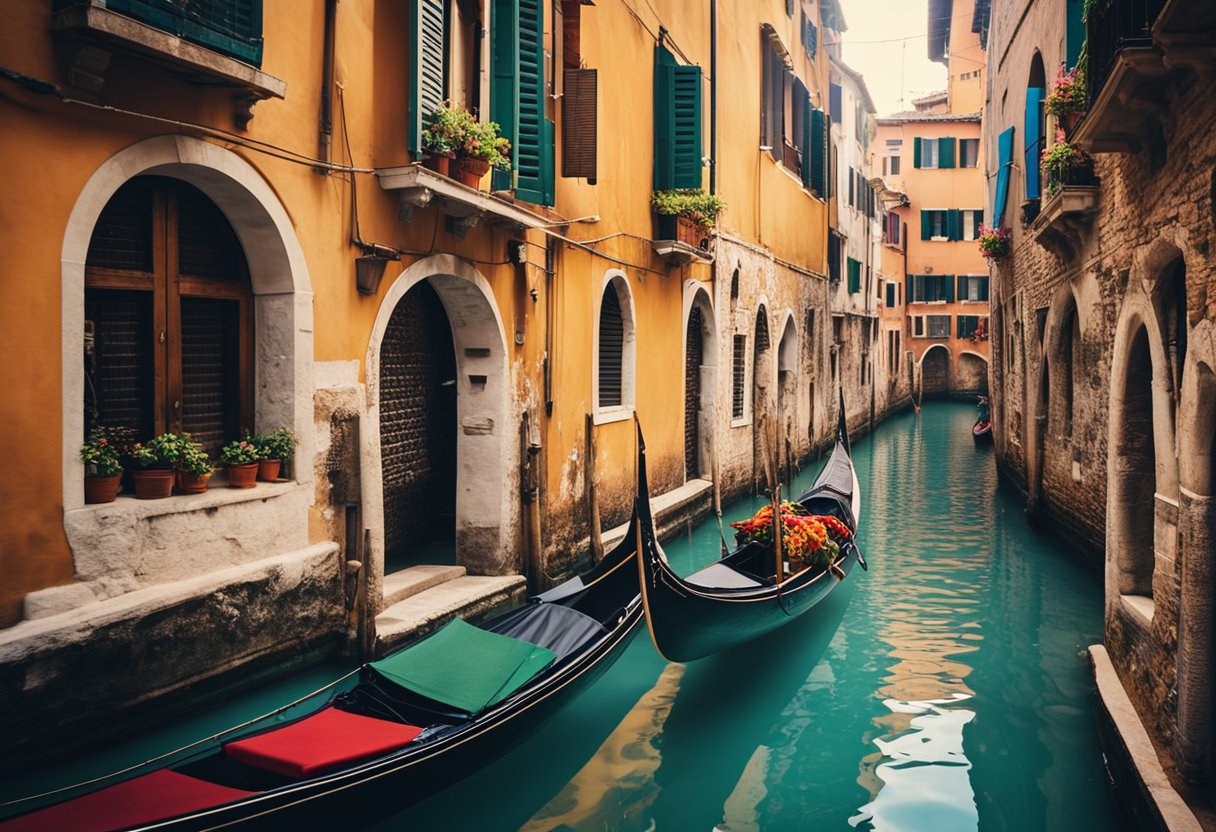
Updated On: April 17, 2024 by Marwa Alaa
As we navigate the quaint waterways and stroll along the cobbled paths of Venice, it’s difficult to ignore the pressing reality of its fate. This city, known for its romantic gondolas and historic architecture, is facing a future submerged beneath rising sea levels. Climate change and the natural sinking of the city compound the risk of flooding, turning the threat of an underwater Venice from a distant possibility into an imminent challenge.
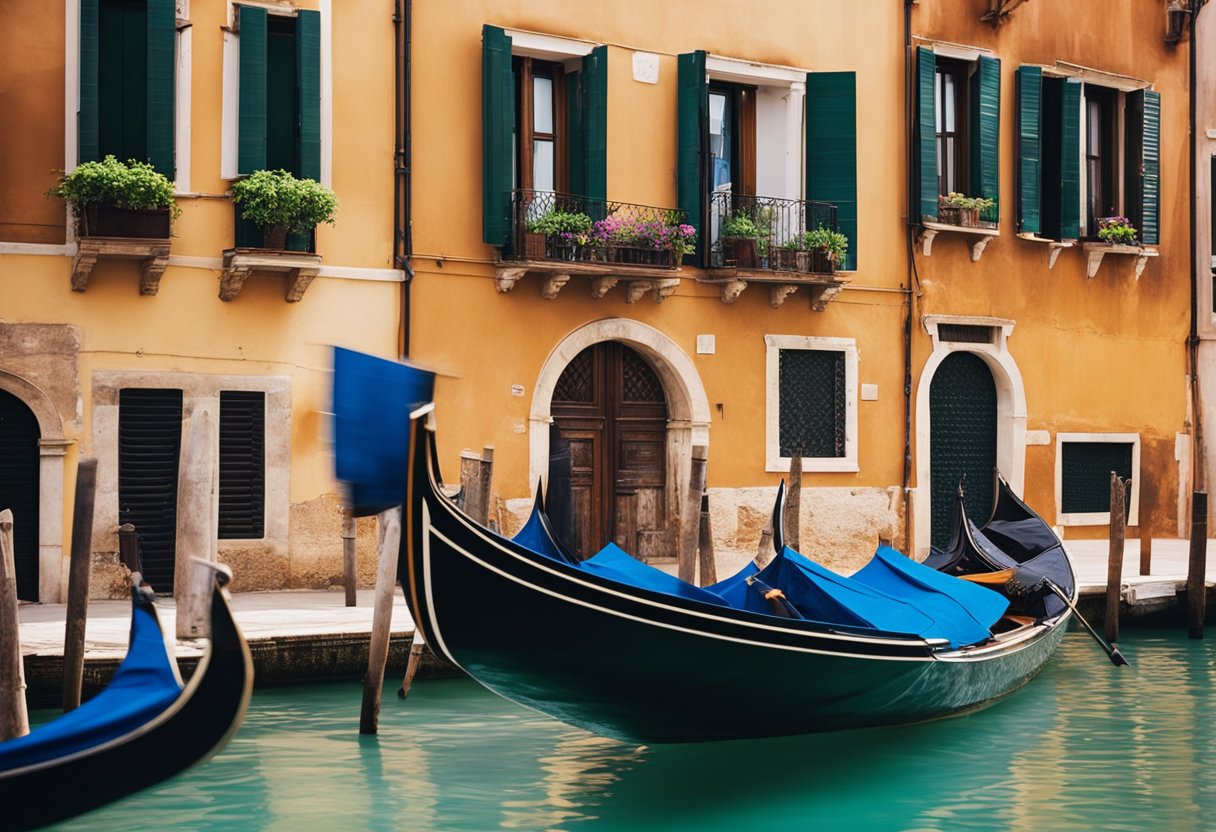
Tourism, an economic lifeline for Venice, also contributes to its vulnerability. While visitors flock to experience the unique charm of the Floating City, the sheer volume of tourists hastens the deterioration of its ageing infrastructure. The local Venetian culture and community wrestle with this paradox: the need to sustain their economy and the urgency to preserve their city’s structural integrity. Meanwhile, technological advances and international efforts offer a glimmer of hope, aiming to safeguard Venice against the encroaching tides.
The Imminent Threat of Rising Sea Levels
We observe that Venice confronts an existential challenge due to the immense threat of rising sea levels. In this section, we uncover how “acqua alta” events and progressive sea-level rise are shaping the future of this historic city.
Acqua Alta and Flood Predictions
Acqua alta, a term we use to describe the high water events that regularly plague Venice, is becoming increasingly frequent and severe. Historical data and our observations indicate a worrisome trend. For instance, during the catastrophic flooding event in November 2019, Venice saw waters rise to levels surpassing 1.8 meters, a stark reminder of the city’s vulnerable position. As we peer into the future, scientists predict that these incidents will only escalate in frequency and intensity, particularly as the impacts of climate change amplify the rate of sea-level rise.
Rising Seas and Venice’s Future
It is crucial to emphasise that the projected rise in sea levels does not bode well for Venice’s sustainability. Reports, like those from the BBC discussing Italy’s plan to save Venice, indicate that without significant intervention, parts of the city could be submerged by the end of the century. Experts estimate that by 2100, sea levels could rise by as much as a metre, a forecast that compounds the urgency for solutions to mitigate flooding. Effective long-term responses are critical to steering the future of Venice away from a scenario where its streets and landmarks are forever lost underwater.
Venice’s Historical Battle with Water
Venice’s relationship with water is complex, as it is both the foundation of its unique charm and the source of its ongoing challenges. The city’s survival hinges on intricate interactions with the Venice Lagoon and the Adriatic Sea.
The Formation of the Lagoon
The Venice Lagoon, which cradles the city of Venice, is an enclosed bay of the Adriatic Sea. Over millennia, the interaction between the freshwater flows from the rivers and the saline waters of the sea helped shape this dynamic environment. As a result, the lagoon served as the perfect setting for the founding of Venice. Its shallow, marshy islands offered natural protection against invaders and a stable base for the construction of the city’s buildings, supported by long wooden piles driven deep into the soft ground. The existence of canals was a natural consequence of living in such a watery environment, turning them into the arteries of commerce and daily life.
Adriatic’s Role in Venice’s History
The Adriatic Sea has been both a protector and a threat throughout Venice’s history. The sea granted Venetians access to maritime trade routes, establishing Venice as a powerful trade empire in the medieval and Renaissance periods. However, the same Adriatic waters, with rising sea levels and storm surges, pose a significant risk to the city’s future. Efforts to control the interaction with the sea, such as the controversial MOSE project—a series of mobile barriers designed to isolate the lagoon from high tides—underscore the Adriatic’s pivotal role in the past, present, and future of Venice.
The Impact of Tourism on Venice
In Venice, the influx of tourists presents a complex scenario affecting the city’s economy and way of life, where the line between benefit and detriment is exceedingly fine.
Economic Boon or Bane?
Tourism undeniably serves as a vital economic engine for Venice, with millions of visitors annually contributing to the city’s livelihood. However, this financial advantage comes at a cost. The local economy has become heavily dependent on tourism, which leads to a significant increase in the cost of living and renting. The very essence of the city is compromised as authentic Venetian shops are replaced with souvenir stores catering to tourists.
Tourism vs. Venetian Lifestyle
The Venetian lifestyle is drastically challenged by the sheer number of visitors. Daily life for locals is disrupted by the waves of tourists delivered by cruise ships, buses, and boats, straining the city’s infrastructure. Essential services are often overshadowed by the needs of the tourism industry, pushing the ordinary Venetians out of not just their homes but out of the cityscape itself.
We see Venice at a crossroads, where tourism shapes not only the economy but the very culture that makes this city unique.
Modern Venetian Infrastructure Challenges
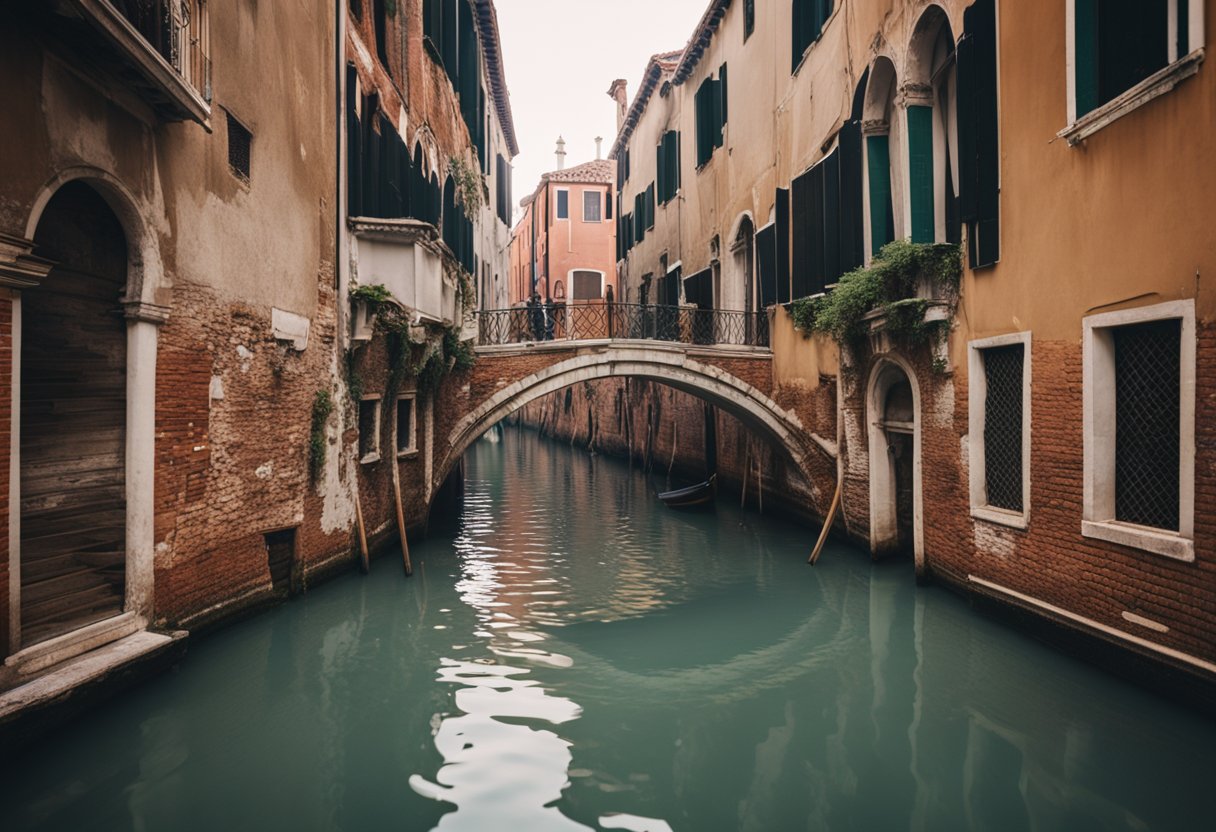
Venice confronts significant infrastructure challenges as it grapples with flooding and environmental threats. We’re now seeing innovative solutions aiming to preserve this iconic city.
The MOSE Project
The MOSE Project has been a critical endeavour in protecting Venice from the perennial threat of acqua alta, or high water. Consisting of a series of movable barriers, it’s designed to temporarily isolate the Venetian Lagoon from the Adriatic Sea during high tides. Operational decisions are informed by sophisticated research and ongoing development, ensuring locks can be raised or lowered in response to changing sea levels.
Urban Planning and Flood Defence
Urban Planning in Venice is uniquely challenging due to its historic infrastructure interlaced with canals. Sustainable development must coincide with maintaining the city’s architectural integrity. Flood defence mechanisms, such as elevated walls and careful management of water flow, are vital to protecting the city’s future. Plans must evolve with the latest research to remain effective against the increasing risk of flooding.
Venice and Environmental Concerns
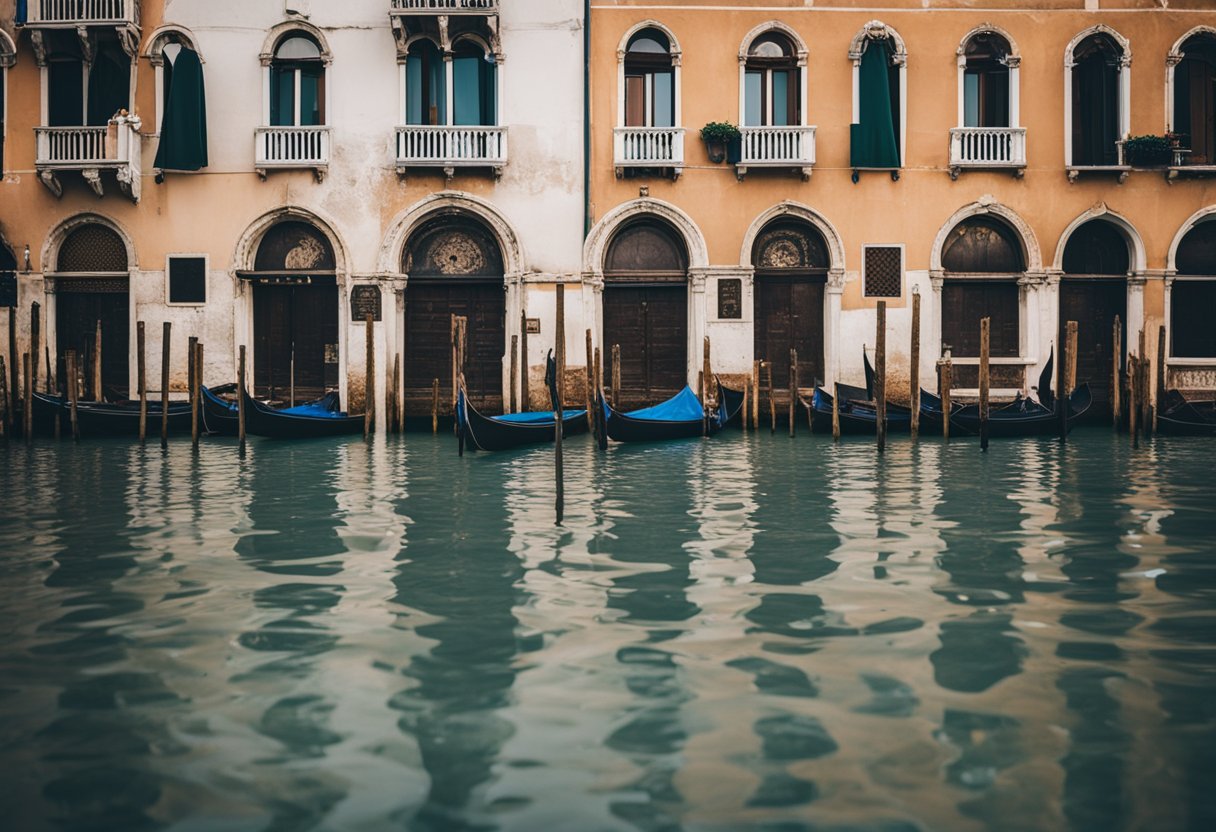
Venice, a city renowned for its cultural heritage, is now a focal point of climate discussions. Facing severe ecological impacts from climate change, we are observing a precarious balance in its unique ecosystems.
Ecosystems at Risk
In recent years, Venice has grappled with the alarming frequency of acqua alta (high water), threatening not only the city’s architectural marvels but also its delicate ecosystems. The introduction of projects such as MOSE, a system of barriers designed to prevent flooding, has been a matter of contention. Our findings suggest this system might be as detrimental as the floods it aims to prevent, potentially destroying the lagoon’s natural ecosystem that fish, birds, and plant species rely on.
Biodiversity in the Balance
As sea levels continue to rise, the biodiversity in and around Venice’s lagoon faces increasing jeopardy. Not only are animal species threatened, but local flora is at risk too. Plants that are integral to the lagoon’s ecological balance may find themselves submerged, altering the habitats of various species. The changes in salinity and water temperature further exacerbate the struggle for aquatic plants and animals to sustain themselves, thereby tipping the scales away from the rich biodiversity Venice once boasted.
Venetian Culture and Community Today

We’re witnessing the transformation of Venice, a city grappling with the dual challenges of flooding and depopulation. Our attention today is firmly on the intricacies of daily life and the community’s steadfast efforts to preserve its vibrant culture amidst these trials.
Daily Life in a Sinking City
The fabric of daily life in Venice is tightly interwoven with the challenges posed by the lagoon, fashioning a unique existence for residents. Real estate here is deeply affected by the encroaching waters, with savvy Venetians adapting their homes to cope with regular flooding. Businesses and households alike have become adept at managing the acqua alta, or high water, installing raised walkways and waterproof barriers to protect interiors.
Cultural Exodus: The Shrinking Population
With the population in decline, Venice confronts a cultural exodus that threatens the continuity of its resident community. The number of true Venetians is dwindling as younger generations seek opportunities elsewhere, driven by the high cost of living and limited employment prospects beyond tourism. This exodus has given rise to real concerns about who will maintain the city’s cultural heritage as the resident population shrinks.
By sharing these insights, we aim to deepen the understanding of Venice’s present struggles and the profound resilience of its people.
Economic Issues Facing the Local Population
Venice’s residents face unique economic challenges due to its delicate balance between maintaining a livelihood and preserving their city amidst the impacts of tourism and environmental changes.
The Cost of Living on Water
The cost of living in Venice is notoriously high. The city’s location means that goods need to be transported via water, which significantly inflates prices. Housing, too, is expensive, not only due to the premium on space in this UNESCO Heritage site but also because of the constant need for maintenance against water damage. For locals, dealing with the high prices tied directly to their daily lives on water adds a strain on their economic stability.
Venice’s Economic Survival Strategies
Venice relies heavily on tourism for economic survival, but this is a double-edged sword. While it brings in necessary revenue, it also contributes to the wear and tear of the city’s infrastructure that the local economy must bear. Artisans and small business owners strive to balance the influx of tourists with the need to preserve their city’s integrity and their own economic well-being. Efforts are continuously made to diversify economic strategies to create a sustainable model for Venice’s future.
Technological Interventions Against the Tide
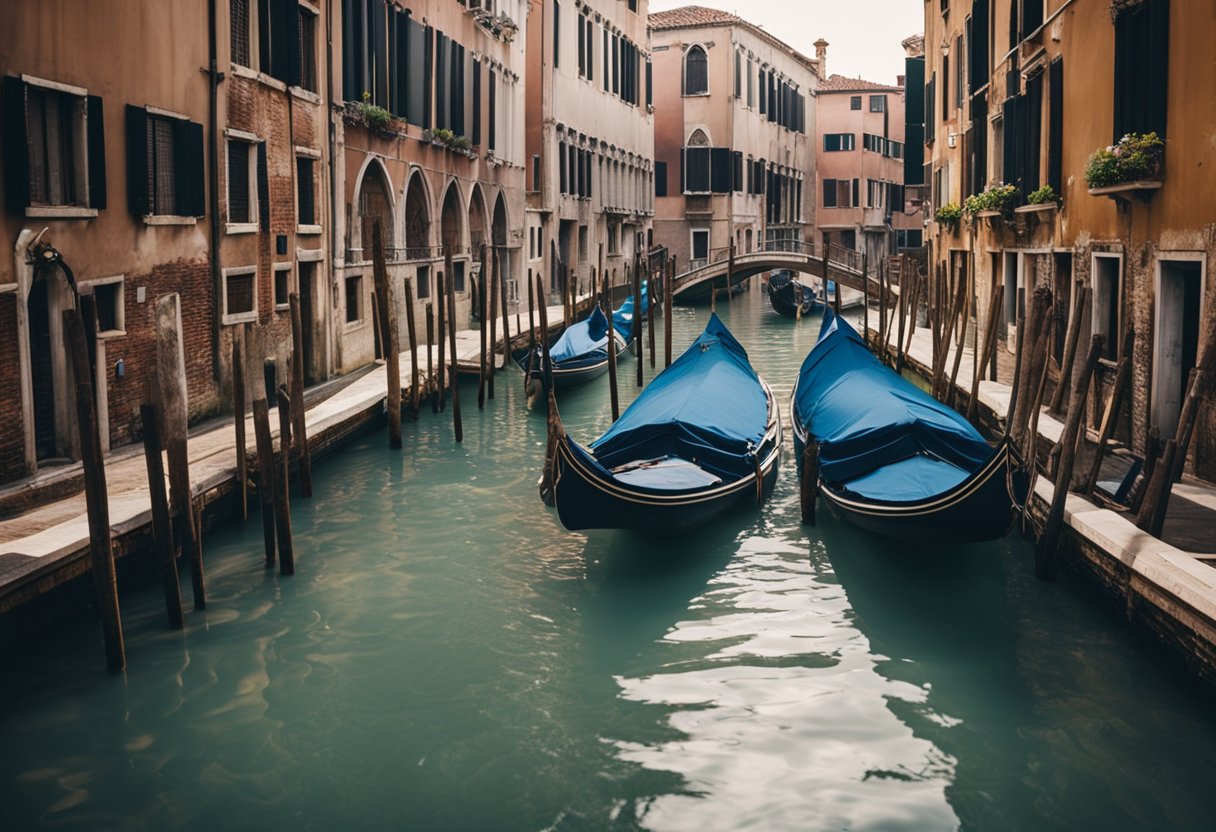
The safety of Venice hinges on innovative solutions, notably those capable of mitigating the city’s chronic flooding.
The Role of MOSE and Other Projects
In our continuous efforts to safeguard Venice from flooding, the MOSE project has been a cornerstone technological intervention. This research-driven initiative has seen the implementation of mobile gates designed to isolate the Venetian Lagoon from high tides.
The MOSE Project, an acronym for “Modulo Sperimentale Elettromeccanico” or Experimental Electromechanical Module in English, operates on a system of mobile barriers that rest on the sea bed. When a high tide is forecasted, the barriers fill with air and rise to form a temporary steel gate that impedes the Adriatic Sea from flooding the city.
The technology supporting these manoeuvres is as fascinating as it is complex. It involves an intricate system of seabed hinges and a network of water-filled caissons that control the buoyancy of the gates – a methodology that has evolved through rigorous development and fine-tuning.
Behind the gates, there’s a vast expanse of research and development, with engineers and scientists striving to perfect the synchronisation and durability of each experimental module. The gates themselves represent a feat of modern engineering, fabricated from steel and capable of withstanding the challenging marine environment.
We recognise that the implementation of such projects raises ecological concerns, which are being evaluated critically. The delicate Venetian ecosystem is taken into consideration, with ongoing studies focused on the MOSE system’s impact and potential improvements to assure long-term sustainability and coexistence with the lagoon’s unique habitat.
International Collaboration for Venice’s Survival
Venice faces unprecedented challenges due to rising sea levels and sinking foundations. Our collective effort is pivotal in preserving the cultural and historical significance of this iconic city.
Global Efforts in Preserving Venice
-
International Response: Nations worldwide recognise the urgent need to address the factors contributing to the deterioration of Venice. Collaborative projects and funding initiatives suggest a commitment that transcends borders to safeguard the future of the city.
-
Italy’s Role: The Italian government has been proactive, implementing measures such as the Mose project, a system of mobile gates designed to isolate the Venetian Lagoon from high tides.
-
European Support: Various European entities have offered their expertise and financial support, reflecting Europe’s vested interest in Venice’s survival as part of its shared cultural heritage.
-
Global Warming Combat: The fight against global warming is integral to Venice’s preservation, with international accords and policies specifically addressing climate change to protect coastal cities.
-
Collaborative Research: Collaboration extends into academia, where researchers, including Italian Professor Enea, are investigating long-term solutions that consider the city’s unique infrastructure challenges.
In this united effort, we see promising progress in Venice’s preservation through international policies, research collaborations, infrastructural innovations, and targeted environmental actions.
Venice in Literature and Media
Venice, often hailed for its beauty, has been a recurring subject in both literature and media. National Geographic, in its August 2009 issue, describes Venice as a city where calamity is expressed with intricate gestures, highlighting its historical struggles against floodwaters. Due to its captivating charm, the city has become a literary backdrop that authors/artisans weave into their tales.
Literature Highlights:
- The City of Romance: Venice’s allure is captured brilliantly through the words of various writers. John Berendt, with his profound insight into Venice’s architectural grandeur and art, presents a narrative in “The City of Falling Angels” that celebrates the city’s enchanting character.
- Poetic Venice: Its mystical presence has also been poeticized, conveying its fairytale essence and the unique sensation of traversing its storied canals and alleyways.
Media Depictions:
- Documentaries and Visuals: The depiction of Venice in visual media often brings to life the challenges it faces, such as those highlighted by a documentary on YouTube, which discusses the impact of sea level rise and mass tourism on the city’s socio-cultural fabric.
- A Digital Perspective: On platforms like Twitter, Venice frequently features in discussions that range from its ongoing conservation efforts to its portrayal in various forms of entertainment.
By examining these rich portrayals, we’re not just observing Venice as a subject of interest but engaging in a wider conversation about its preservation amid numerous challenges. This iconic city’s place in literature and media continues to inspire and remind us of the need to safeguard its future.
Looking Toward the Future of Venice
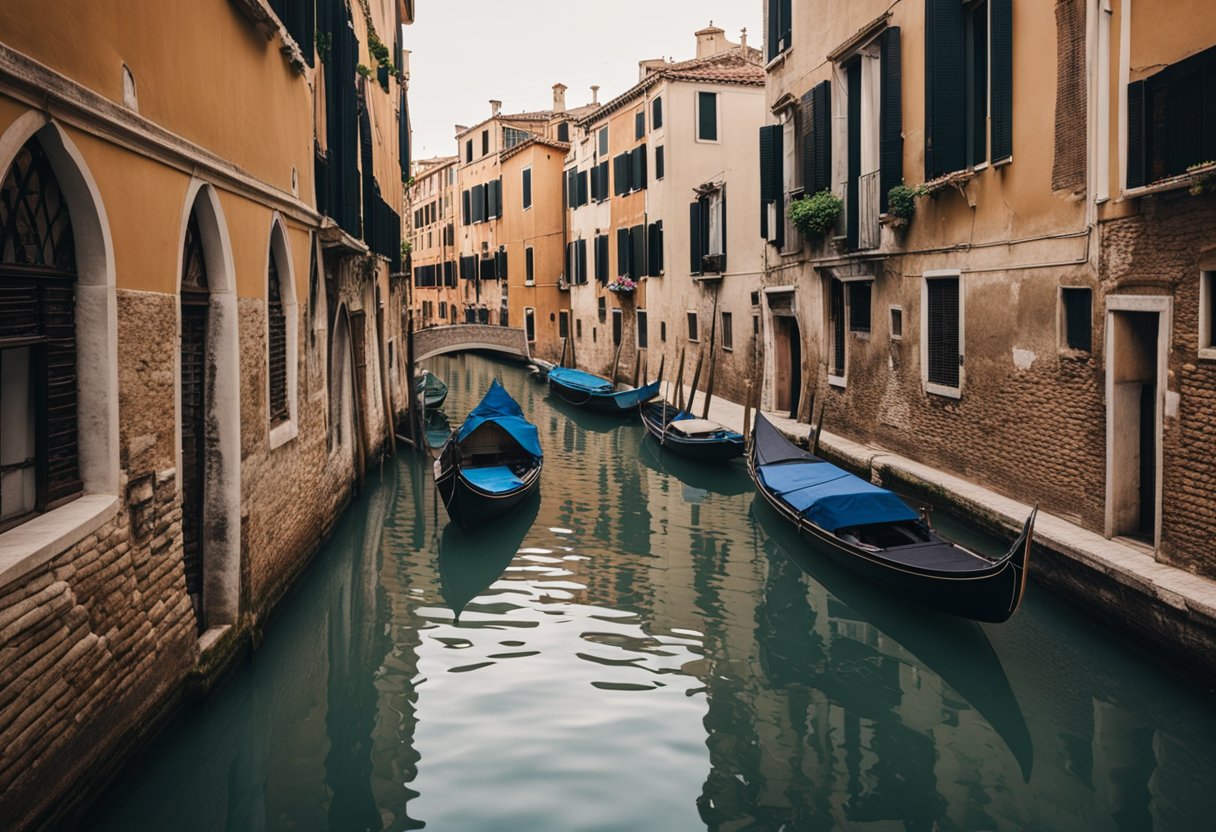
As we contemplate Venice’s trajectory into the next decade, the city faces urgent challenges due to rising sea levels and ecological threats. It is imperative that we consider robust adaptation measures and educational initiatives that are crucial in safeguarding Venice’s future.
Adaptation and Long-term Solutions
Venice’s survival hangs in the precarious balance between the encroaching sea and the will to implement sustainable solutions. The Mayor of Venice has been pivotal in orchestrating efforts to combat the threat of climate change on this fragile lagoon city. By 2030, the city aims to have advanced infrastructure in place, not only to mitigate flood risks but to ensure the city’s longevity. The Venice Lagoon must be at the heart of these plans, with conservation strategies that enhance its resilience.
The ambitious MOSE project is an example of such an adaptation strategy—its barriers are designed to rise and protect the city from high tides. Despite criticisms and concerns over its feasibility and environmental impact, the project represents a significant engineering feat intended to shield the city from the worst aquatic incursions.
Raising Awareness and Education
Securing Venice’s future extends beyond physical barriers; it deeply involves raising awareness about its vulnerabilities. In our role, educating the public about the impacts of climate change on Venice allows for informed stewardship of the city. Emphasising sustainable tourism and promoting local culture, we can play a part in protecting Venice’s unique heritage.
Our efforts to illuminate the global significance of Venice as a historical and cultural monument are essential. We support initiatives that allow locals and visitors alike to engage with the city in a manner that respects its ecological and historical contexts. We advocate for programmes that intertwine Venice’s conservation with its educational curriculum, informing future generations on how to maintain this city’s legacy without compromising its delicate ecosystem.
Frequently Asked Questions
In this section, we’re addressing the most common inquiries about Venice’s struggle against rising waters. We’ll explore the reasons for its sinking, the measures in place to protect it, and what the future may hold for this historic city.
What measures are being taken to prevent Venice from sinking?
To tackle the city’s descent, Venice has implemented the MOSE Project, a series of mobile gates designed to separate the Venetian Lagoon from the Adriatic Sea during high tides. This ambitious engineering endeavour aims to safeguard the city from flooding.
What are the primary causes behind the submergence of Venice?
Venice is grappling with a combination of factors: natural subsidence, the extraction of groundwater, and rising sea levels due to climate change. These forces together have led to the city’s present predicament.
How much time is estimated before Venice becomes completely submerged?
It’s challenging to prophesy an exact timeframe due to fluctuating environmental factors. However, studies suggest that without significant intervention, Venice could face perilous conditions by the end of the century.
What are the historical reasons for Venice’s vulnerability to water?
Historically, Venice was built on wooden piles driven deep into the marshy ground, which is an impressive feat of engineering. Unfortunately, this foundation makes it especially susceptible to water damage over time.
Is there a possibility to save Venice from its impending aquatic fate?
While the situation is severe, projects like MOSE and community-led conservation efforts provide hope. The aim is to balance the preservation of Venice’s heritage with modern innovation to combat the threat of water.
What are the observed changes in Venice’s landscape over recent years?
Venice has witnessed increasing instances of Acqua alta or high water, causing notable flooding. Additionally, the city has sunk by more than 9 inches over the last century, with noticeable effects on its iconic landscape.






